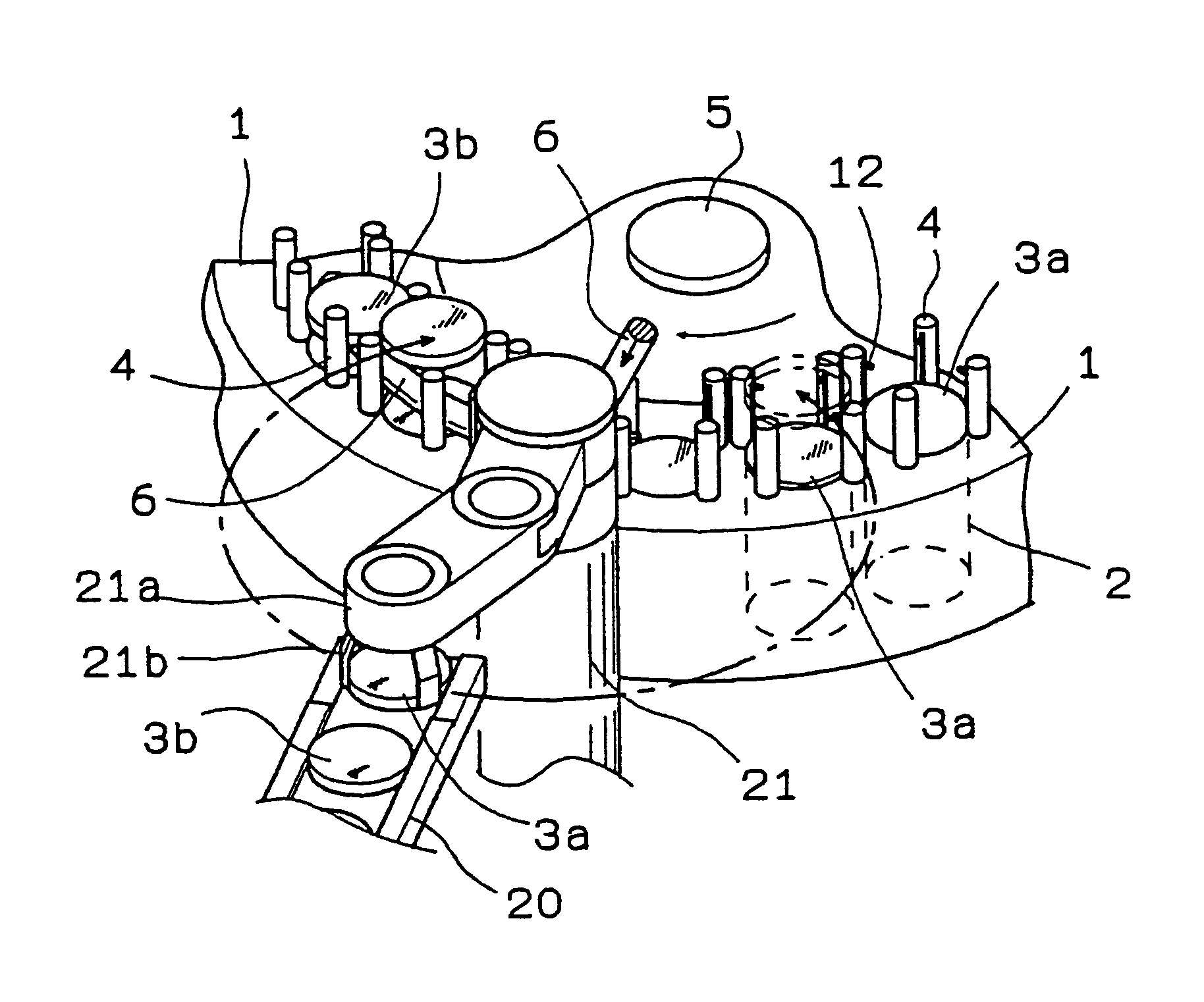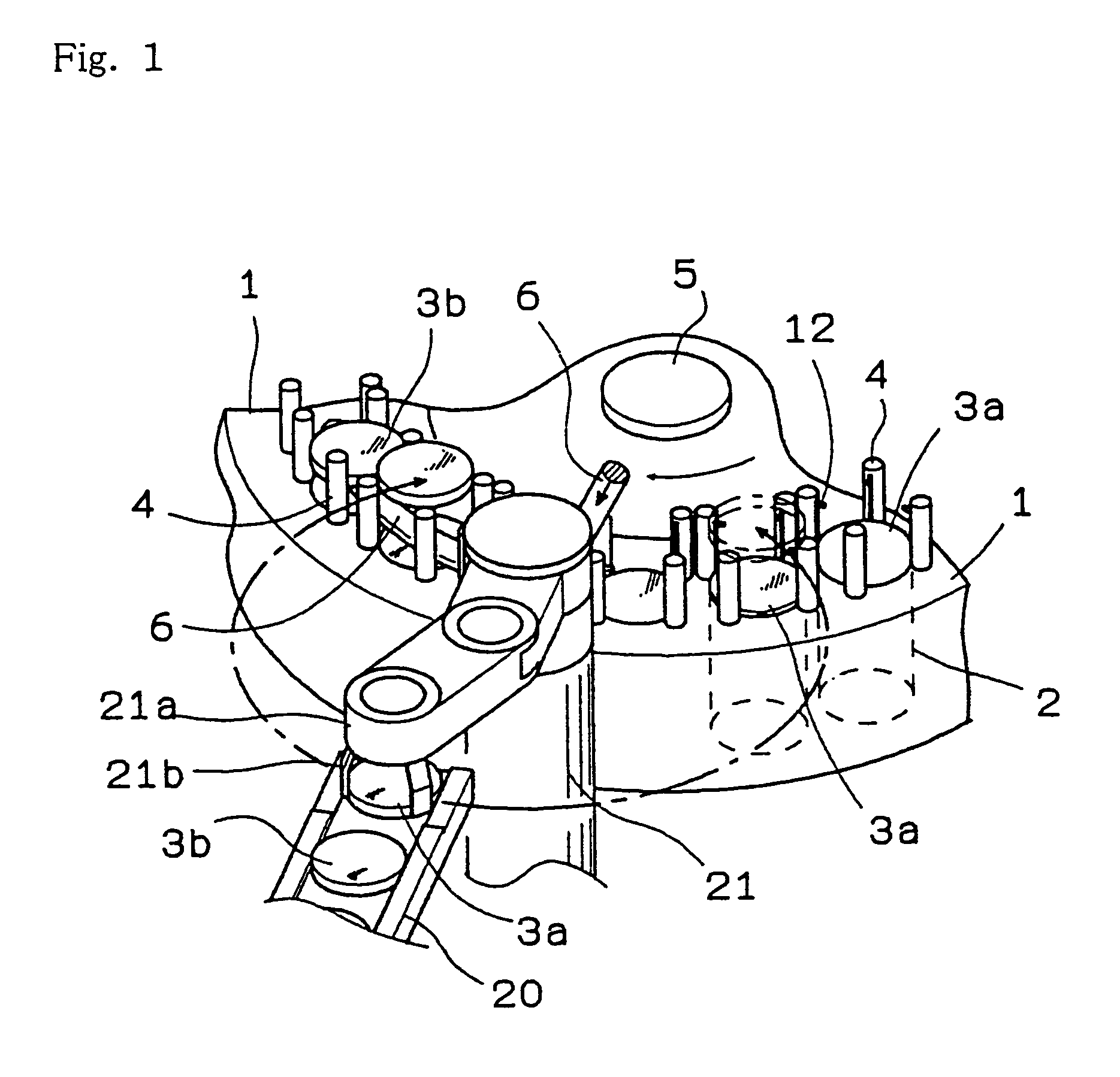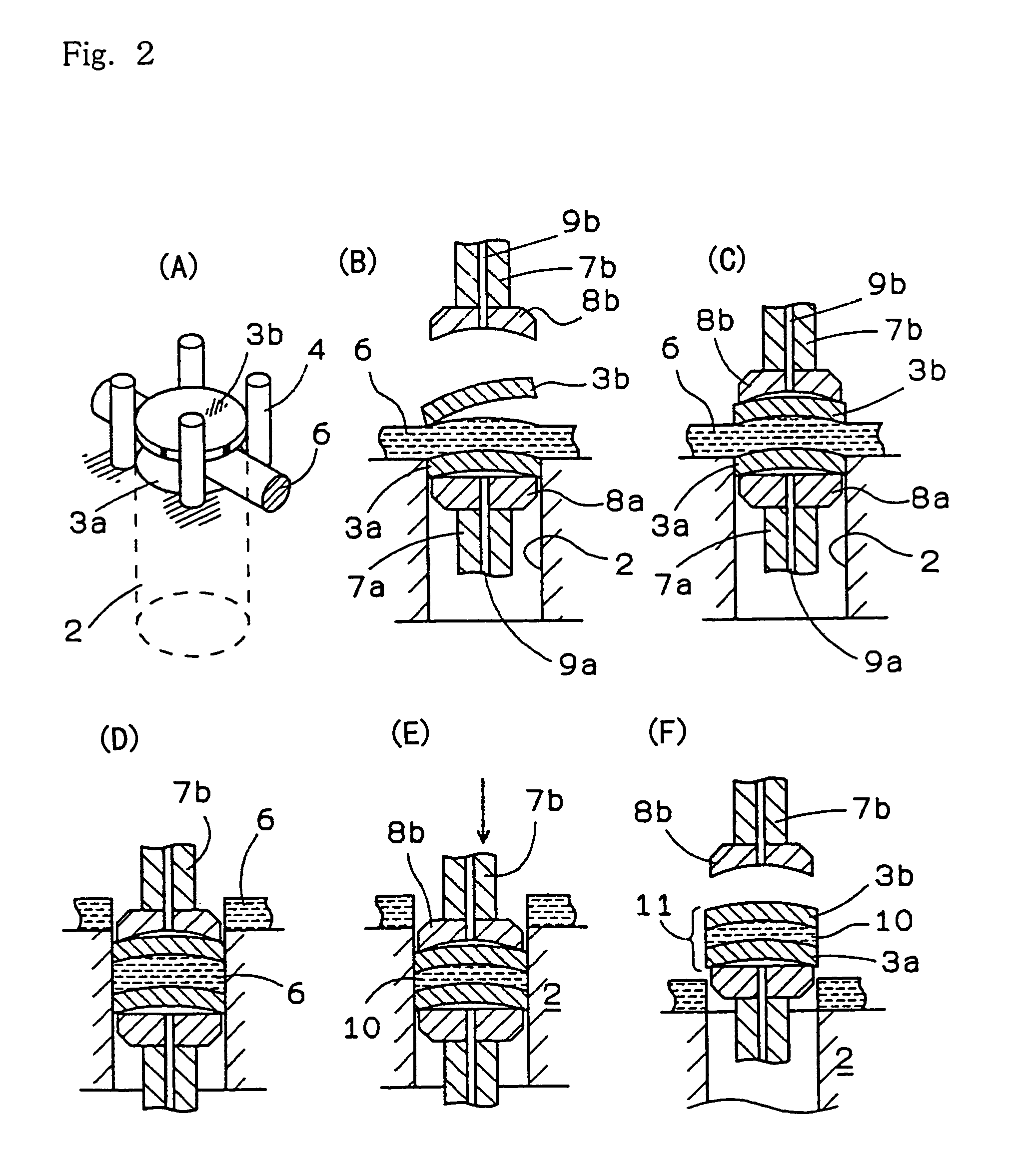Manufacturing method of plastic lens and the lens
a manufacturing method and lens technology, applied in the field of plastic lens and lens manufacturing, can solve the problems of lens striae and polarization irregularities are generated, and the lens lacks uniformity when the lens is dyed, and the mechanical strength is not respected
- Summary
- Abstract
- Description
- Claims
- Application Information
AI Technical Summary
Benefits of technology
Problems solved by technology
Method used
Image
Examples
embodiment 1
[0018]FIG. 1 is a perspective view schematically showing a portion of a turntable 1. The turntable 1, as a whole, has a circular disc shape and respective members which are shown in a perspective view are arranged on all periphery of the turntable 1. The turntable 1 is rotated about a rotary shaft 5 at a fixed speed. With respect to respective molds which are arranged at a lower side and an upper side, a pair of molds having a planned combination are arranged in the fore-and-aft direction or in the left-and-right direction, and is placed on a transport platform 20 of a heating furnace to be heated. In this embodiment, the transport platform 20 is moved in the heating furnace, wherein the pair of molds are arranged in the fore-and-aft direction at an exit, that is, the mold 3a which is arranged at the lower side and the mold 3b which is arranged at the upper side are arranged in series in the advancing direction. Transporting of the mold is performed by one transport means. In arrang...
embodiment 2
[0020]When the nozzle of the extruding machine has a circular shape and the resin molten material which is discharged from the nozzle is discharged at a fixed flow speed, provided that a moving amount of the lower mold is fixed, a thickness of the resin molten material placed on the lower mold is fixed. Here, a moving speed of the lower mold is larger than a discharge speed or a fall speed of the resin molten material, the resin molten material is elongated and the thickness thereof is decreased, while when the moving speed of the lower mold is smaller than the discharge speed or the fall speed of the resin molten material, the resin molten material is liable to dwell and hence, the thickness of the resin molten material is increased. Further, when an opening diameter of the nozzle is increased, the diameter of the resin molten material is increased, while when the opening diameter of the nozzle is decreased, the diameter of the resin molten material is decreased. Still furthermore,...
embodiment 3
[0022]Although the upper mold 3b is arranged on the resin molten material while being guided by the guide poles 4, it is preferable to bring the upper mold 3b in contact with the resin molten material in an inclined posture with respect to the resin molten material. First of all, the mold is allowed to fall such that a one-side end portion of the mold is brought into contact with the resin molten material and the mold is sequentially shifted to a horizontal posture thus preventing the entanglement of air. As shown in FIG. 5A, each guide pole 4 is positioned on the extension line of the wall surface of the cylinder 2 on the turntable 1 and performs the positioning of the mold. Since the guide poles 4 are provided at four positions around the cylinder 2, the mold is temporarily held at a height which prevents the mold from coming into contact with the resin molten material by providing the engaging members 12 in the inside of the guide poles 4. The guide pole 4 is constituted of a tub...
PUM
| Property | Measurement | Unit |
|---|---|---|
| melting point | aaaaa | aaaaa |
| glass transition point Tg | aaaaa | aaaaa |
| temperature | aaaaa | aaaaa |
Abstract
Description
Claims
Application Information
 Login to View More
Login to View More - R&D
- Intellectual Property
- Life Sciences
- Materials
- Tech Scout
- Unparalleled Data Quality
- Higher Quality Content
- 60% Fewer Hallucinations
Browse by: Latest US Patents, China's latest patents, Technical Efficacy Thesaurus, Application Domain, Technology Topic, Popular Technical Reports.
© 2025 PatSnap. All rights reserved.Legal|Privacy policy|Modern Slavery Act Transparency Statement|Sitemap|About US| Contact US: help@patsnap.com



